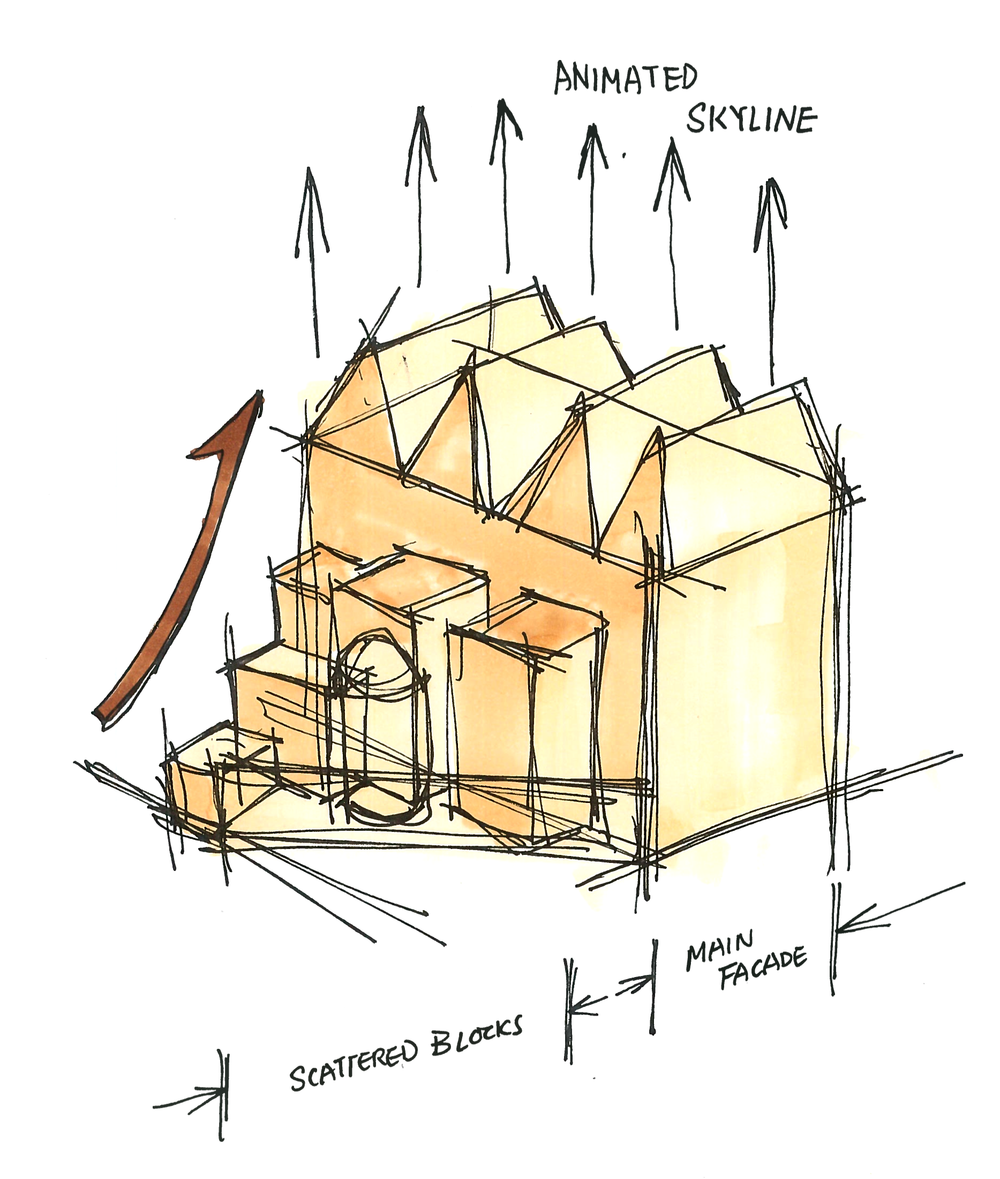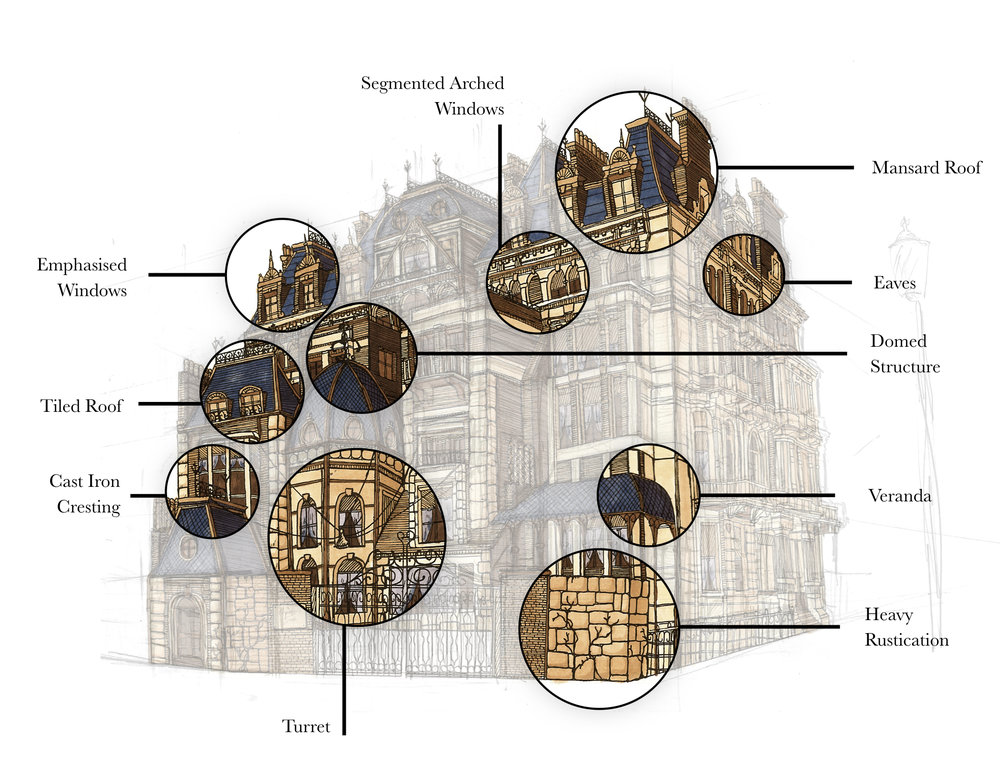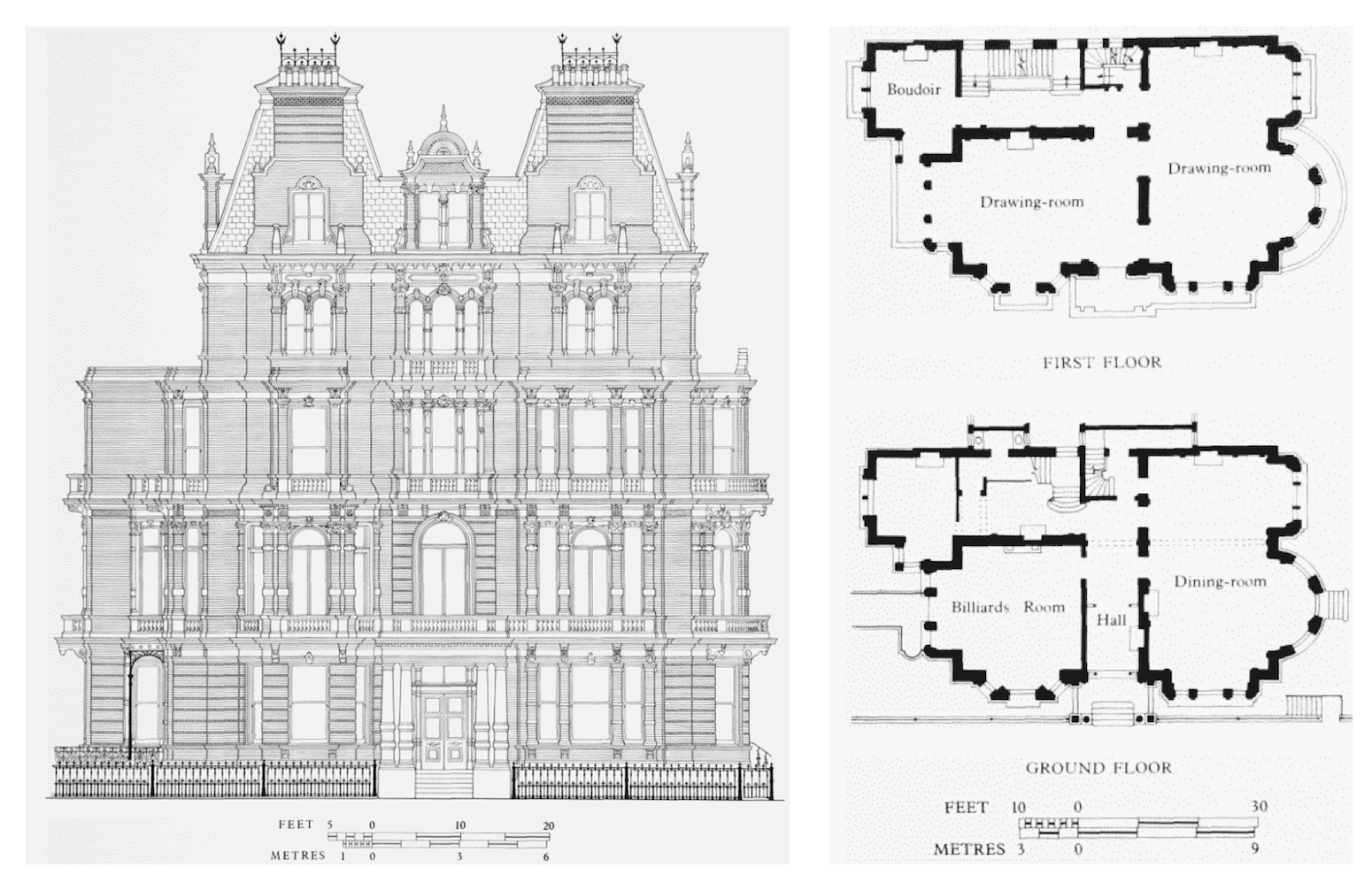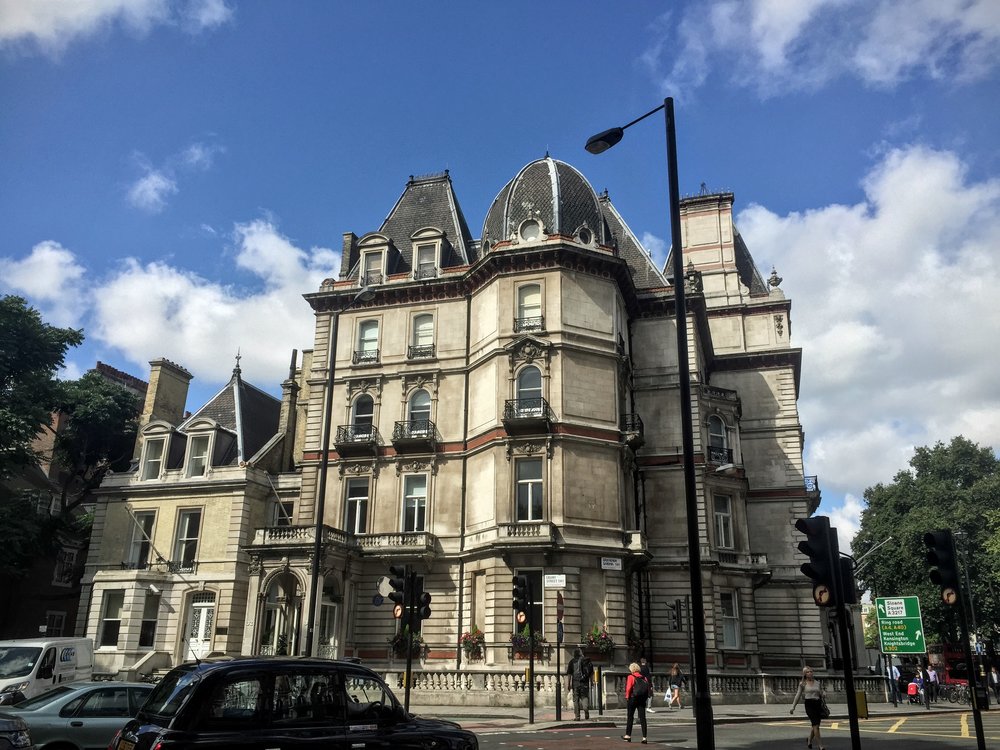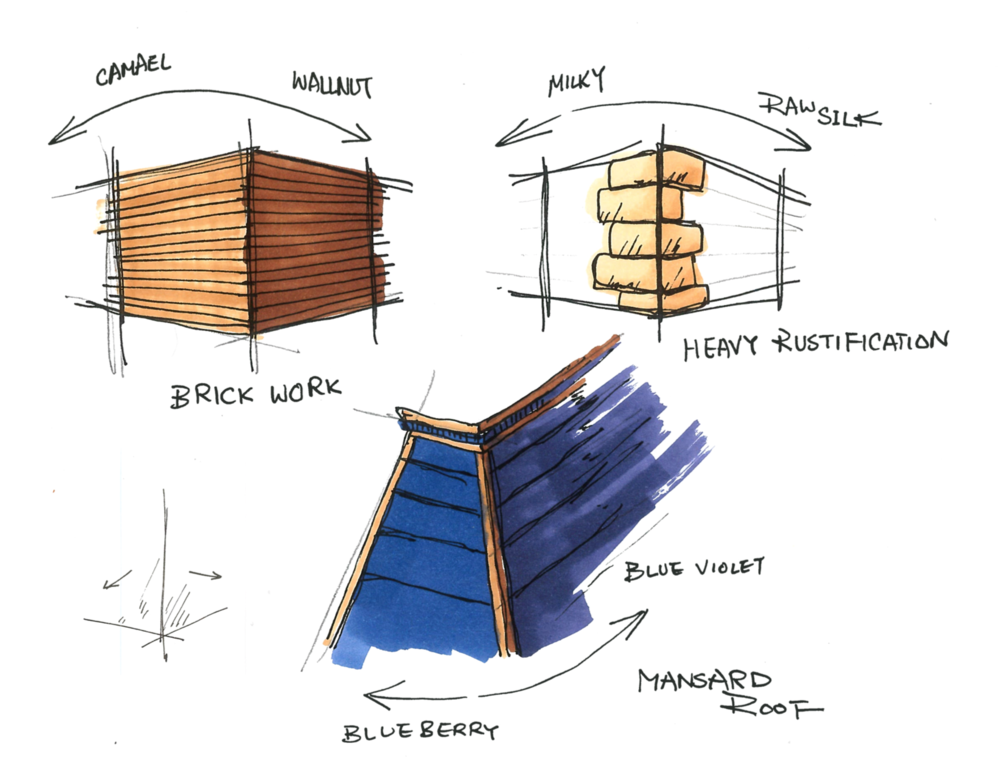Emperor's Gate II: Architectural Details
This is the second and last section on Emperor's Gate. Previously, we've discussed about the deep connection between Baroque architecture and theme park on an ideological level. Now, let's take a closer look at the design of Emperor's Gate in detail and how the various details were inspired.
Layout & Shape
The layout and shape of Emperor's Gate sticks true to the idea of Baroque through creating drama by framing the guests' view. As seen in the block diagram on the right, the primitive prototype of the facade was designed with two specific ideas in mind:
- Inclined Visual Draw. The triangular block placed in front of the main rectangular facade has the purpose of directing the guests visual focus upward into the sky. This makes the mansion more visually daunting. This shape also gives more weight to the bottom, conveying a sense of strong foundation and allow the mansion's skyline visually reach higher. In a way, this can be considered as an architectural response to the small site area. So instead of building horizontally, the mansion invites guest to look vertically.
- Angled Facade. It should be noticed that the facade is placed at an angle to the direct view of the guest. This angled view forces a perspective that can invoke a sense of drama. This technique has been used in lots of buildings in urban areas around the world. When a perfectly rectilinear street block suddenly encounters an angled facade, the effect can be quite dramatic.
Taking these two visual ideas, a more detailed block diagram has been devised. The mansion consists of two main components: A main facade block with an animated skyline to echo with the aforementioned inclined visual draw. The front of the main block is then punctuate with a few scattered blocks to complete the visual effects.
Architectural Ornamentation
Again, Emperor's Gate is heavily influenced by British and French Baroque. The diagram below highlights some of the key elements and ornamentation that have been incorporated.
These designs have been heavily inspired by the Cornwall House and Garden House that I pass by everyday from my flat to university. Every time I walked pass these mansions, I couldn't help but stop by and marvel at these two jewels, bursting with French baroque exuberance!
These two attached mansions sit at the heart of the Cornwall Gardens in South Kensington, London (See map), and was designed in the 19th century by architect Thomas Cundy III.
These two attached mansions sit at the heart of the Cornwall Gardens in South Kensington, London (See map), and was designed in the 19th century by architect Thomas Cundy III.
As it can be seen from the photo above, the mansard roofs and the sides of Emperor's Gate have been directly influenced by Cornwall House. In particular, Cornwall House's animated and reaching skyline, roofs and chimneys combine to create a very dynamic, and almost bursting composition. I enjoyed Thomas Cundy III's architectural style so much that I went around London and looked for his other works. In particular, Grosvenor Gardens near Victoria. It has a similar French Baroque flare, and many elements found here have also been incorporated into Emperor's Gate.
Color Palette
Emperor's Gate main colour scheme was chosen in accordance to the typical Italian stucco palette like most of the buildings around Cornwall Gardens.I have given it a slight sepia and walnut tone just to evoke a more romantic and historical atmosphere for modern day visitors. On the other hand, a monochromatic colour scheme would be too bland. Given that the roofs and the animated skyline of the mansion are the mansion's highlights, giving them a touch of bright colour will enhance the liveliness of the entire structure.
There are quite a few possible colour combinations, but I thought sepia and purple will yield an interesting contrast, while mutually complementing each other. A purple mansard roof further conveys a sense of sophistication and luxury, which is fitting with the mansion. This can be seen in the example above. The building in the photos is Excelsior Hotel Gallia in Milan.
The diagram above demonstrates the colour palette chosen for Emperor's Gate, and the diagram below shows a few testing ideas of how these colours would be applied onto the building structure itself.
Other Features
I have a few last remarks regarding the Emperor's Gate facade. Visual kinetism is very important when it comes to theme park architecture. It is what gives the entire place energy and liveness. Therefore, the building itself should not be static. Now, I am not suggesting we should put the mansion on wheels. However, there are many subtle ways to give motion to the environment. First, and the easiest, is to allow guests to walk back and forth in front of the mansion. The guest flow itself creates motion. The numerous chimneys that tower Emperor's Gate can periodically puff off smoke that flow with the wind. There can be automated fans that blow the curtains from the inside from time to time to create the illusion that someone actually lives inside. Similarly, at night, selected windows can be illuminated from behind, with shadow sweeping by periodically. (Think: Home Alone).
Final Thoughts
Emperor's Gate is a unique experimentation of how a simple facade for a mansion-type attraction can be so meticulously designed. Honestly, I am quite surprised by how much I can write and discuss about it! Ultimately, I think it is a beautiful exemplification of how Baroque architecture and theme park architecture are so well connected on an ideological level, and how we can borrow techniques for creating illusion and drama from past historical buildings and apply them into contemporary themeparks.
Hopefully, someday I will have the time to complete the attraction itself and discuss with you about the ride itself that is housed within Emperor's Gate. What do you think about Emperor's Gate? Do you have any ideas and suggestions as to what the ride inside it could be? Let me know in the comment section below.



